Humanoid Robots Are Taking Over Congolese Roads And Look Who’s Behind This “Machine Invasion”
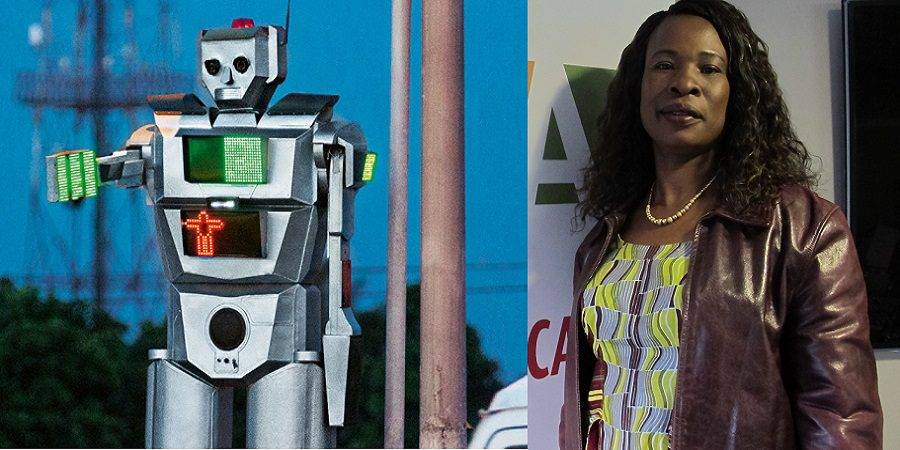
Kinshasa is the capital of the Democratic Republic of Congo and one of the largest cities in Africa. With a population of over 10 million, a road network that is less-than-efficient, a road-traffic control body that is not exactly eager to the do the job, and maybe a few thousand impatient drivers with very little regard for traffic rules, the city is notorious for heavy traffic jams and gridlocks that continue for miles.
Scores of road users, especially drivers, are known to be left frustrated by the several hours spent in the jams on a daily. And as if that’s not problem enough, they still have to contend with officials of the city’s traffic police who are described in several quarters as corrupt individuals looking to nab drivers on trumped-up allegations of flouting regulations with the aim of landing bribes.
Thérèse Izay Kirongozi; a trained Congolese Engineer, was all too aware of these problems, being a road user herself. Between the roads not being good enough, impatient drivers blocking off intersections and causing road crashes, and corrupt traffic wardens looking for drivers to prey upon, she’d been caught up in more jams than she could possibly remember.
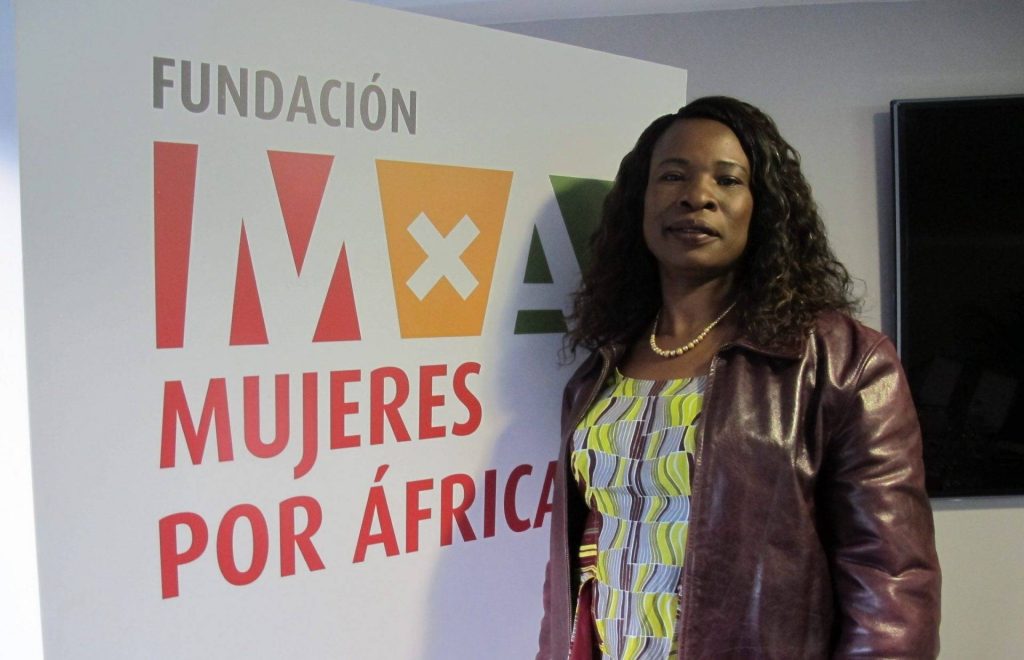
Source: rosamtristan.com
And she’d perhaps grown weary of the norm which, in most cases, involved honking continuously in frustration and yelling obscenities at mindless traffic offenders whose impatience only aggravate the situation.
That’s probably why she took it upon herself to come up with a solution to the problem – one that summoned all her expertise in engineering and tech.
Thérèse Izay Kirongozi and her team at Women’s Technologies (WoTech) – a Congolese cooperative giving preference to qualified female engineers while not leaving out expertise from the menfolk – have developed revolutionary giant traffic robots that are doing an excellent job of managing the city’s traffic.
With these two-and-half metre high machines controlling traffic on Kinshasa roads, it is no longer business as usual for some of those traffic wardens who are basically out for hush money, and the traffic situation has greatly improved.
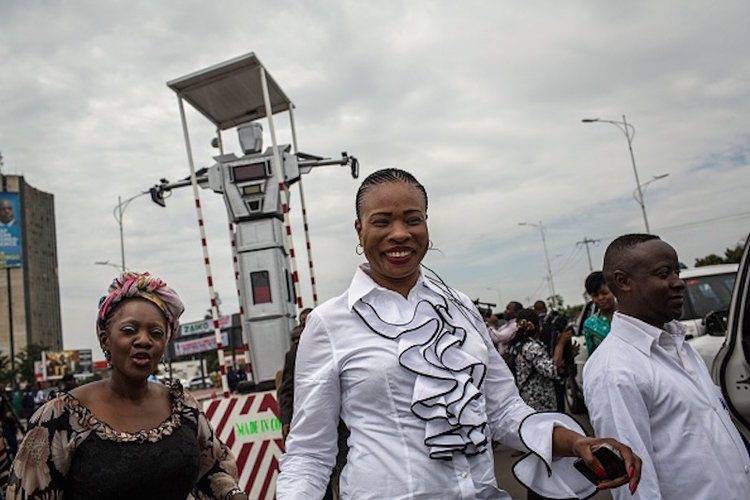
“A robot that is doing road safety and road regulation is really made-in-Congo,” said Thérèse Izay Irongozi, the designer of these devices and president of the Woman Technology Association, where the project was incubated.
The association was originally created to help Congolese women with an engineering degree to enter the professional environment. Today, with the invention of these traffic control robots, the idea is to create jobs all over the country, with the support of financial partners.
Izay and her team rolled out the first prototype of the traffic-control robots late 2013 and since then, they’ve become a feature on major Congolese roads. For instance, these eight-feet effigy-like structures are now part of daily life in Limete; a bustling neighbourhood in Kinshasa, where it manages vehicular traffic on Lumumba Boulevard – a busy route within the Congolese capital.
“Drivers, you can leave the passage to the pedestrians.” Those are not the words of a traffic warden, at least, not in Kinshasa at the moment. It’s the humanoid robots calling out.
The machines are built out of mainly aluminium and steel. Like something similar to Optimus Prime from the Tranformers movie, these ‘robocops’ have human-like faces, as well as voices that direct users, and arms that fold into a set of green and red lights. They are also fitted with built-in cameras which flag traffic offenses and report offenders to a central computer.
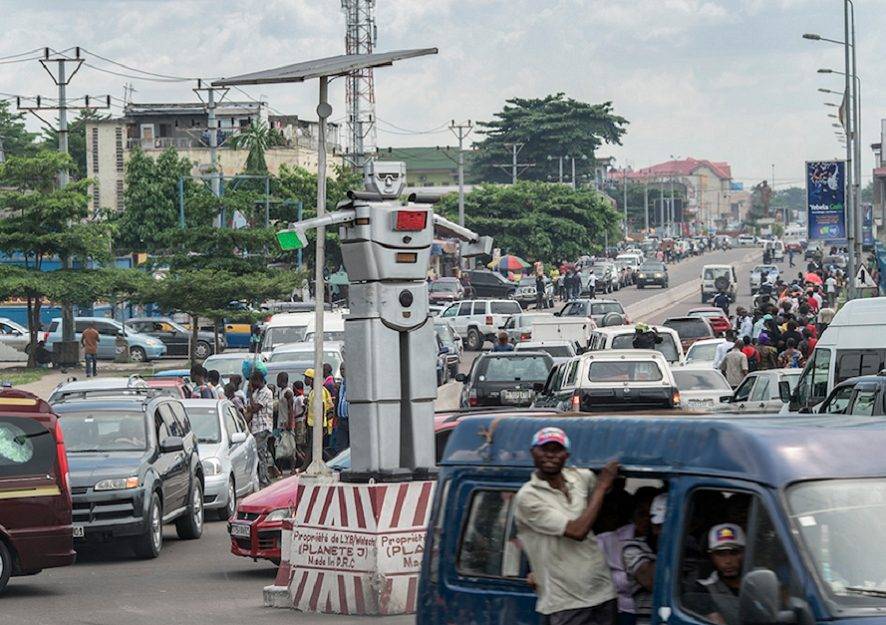
In the junctions of Kinshasa that are particularly notorious for jams, these robots can be found flailing their arms in human-like fashion and rotating deftly to direct traffic and pedestrains in different directions.
Weighing in at 250 kilograms and running on solar power, these robots have surely been instrumental to improving traffic flow in the city and reducing road crashes too. Izay is convinced that modernising regular traffic lights is necessary in today’s world, while reiterating that it is quite a simple task too.
“For us, the robots are an innovation,” she said, adding that these robots will not only be restricted to human figures: “Why not build a dog at some point?”
For all the problems it alleviates, the robotic traffic control system is not without issues of its own. For starters, it runs on solar power which means that operations are ground to a halt on cloudy days. And at night-time, they go off completely, though traffic gets considerably lighter during this time.
Reckless driving has also seen some of the robots getting bashed in crashes, though Izay and her team are prompt to respond in such situations – retrieving the remains and conducting repairs in their lab in Kinshasa.
But Thérèse Izay Kirongozi remains unfazed by the shortcomings and is only focused on working on improvements. For now, the invention is in use in all 18 municipalities in Congo – selling for between USD 15 K and USD 20 K.
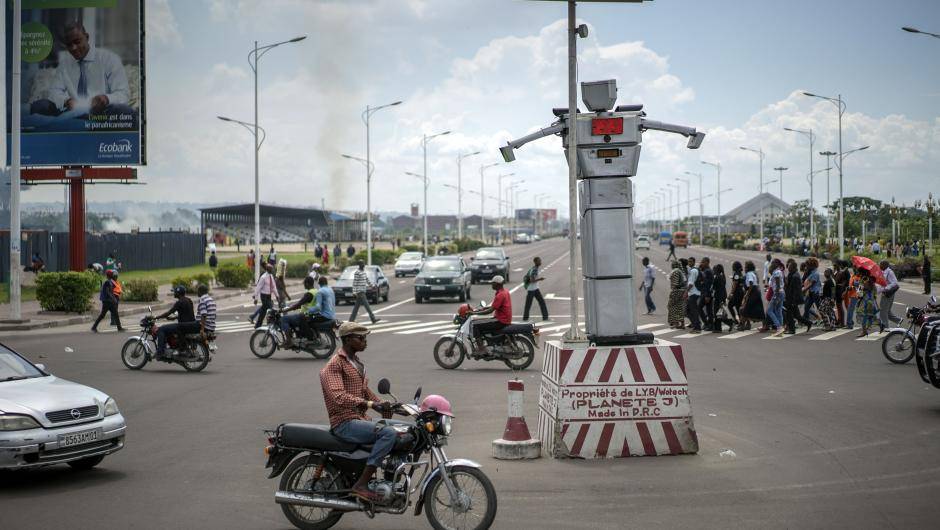
Apart from putting people to jobs, the Congolese entrepreneur is also hoping the invention will inspire other young individuals in the country to embrace tech entrepreneurship as a way of upping the ante in the areas of human capital development and economic growth in Congo.
Beyond the shores of Congo, she’s exploring other routes as talks are believed to be in progress with a number of African countries who are looking to implement the technology.
Thérèse Izay Kirongozi has also become something of a globetrotter, speaking in various conferences and workshops in parts of Africa and Europe. It’s quite commendable how her ‘outside-the-box thinking’ has alleviated the traffic situation in Congo.
Featured Image Courtesy: missionafricane.it